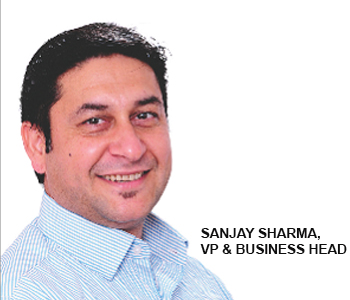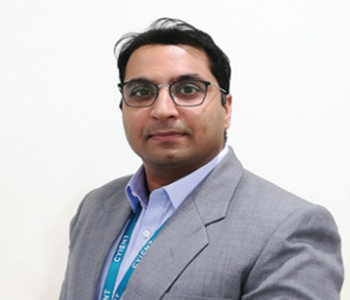 Unmanned Aerial Vehicles (UAVs)or drones have proved to be of prime importance to the sectors they are implemented in. Although, there are several sectors that drone technology is put into use currently, the primary purpose of creating a technologically advanced drone is to fulfill a defense requirement and later, the usability finds its place in the other sectors.They can be used to spray crop medicines in agriculture, perform home deliveries, and even save lives by airlifting human organs between hospitals. The industry is talking of air taxis too for transportation. Based out of Hyderabad, Cyient Solutions and Systems (CSS) offers design, development, production and aftermarket support facilities for Tactical UAVs for the Indian Armed and paramilitary forces. The requirements of Indian armed forces are unique and dictated by the complex and adverse terrains and geographic conditions that the UAVs will be subjected to. Cyient’s strategy is to provide solutions that meet such needs.
Unmanned Aerial Vehicles (UAVs)or drones have proved to be of prime importance to the sectors they are implemented in. Although, there are several sectors that drone technology is put into use currently, the primary purpose of creating a technologically advanced drone is to fulfill a defense requirement and later, the usability finds its place in the other sectors.They can be used to spray crop medicines in agriculture, perform home deliveries, and even save lives by airlifting human organs between hospitals. The industry is talking of air taxis too for transportation. Based out of Hyderabad, Cyient Solutions and Systems (CSS) offers design, development, production and aftermarket support facilities for Tactical UAVs for the Indian Armed and paramilitary forces. The requirements of Indian armed forces are unique and dictated by the complex and adverse terrains and geographic conditions that the UAVs will be subjected to. Cyient’s strategy is to provide solutions that meet such needs. The company’s strategic approach is towards equipping the Indian defense forces with tactical, cost-effective, efficient, user-friendly, and indigenous RPAs that are field-proven and can operate through a unified, intuitive, and advanced ground control station, and are designed to overcome modern security challenges. “These systems have been tested in high altitude and severe weather conditions proving to be unique among the competent players in the market,” states Sanjay Sharma, VP & Business Head.
Tactical UAVs
CSS has developed a number of Tactical UAVs that are being used by the Indian Armed and paramilitary forces. SpyLite is a mature, advanced, combat-proven, extended performance electric Mini-UAS, optimized to provide covert, "overthe-hill" or extended range, real-time visual intelligence. With a proven field record of over 35,000 operational sorties, it is one of the most advanced and reliable mini UAV platforms available today.
WanderB VTOL (vertical takeoff and landing) is an electric and mini UAS optimized to facilitate covert, "over-the-hill" operations or extensive, day-and-night intelligence, surveillance, and reconnaissance (ISR) missions in real time. The ThunderB is a small-sized tactical UAV, with an unprecedented endurance of 24 hours mission time, and an extended control range of up to 150 km based on its advanced digital communication technology. It can also carry small cargo capsules under each wing and release the cargo to reach targets with high accuracy following a ballistic trajectory.
This ability can be used in various scenarios like providing lifesaving measures, search and rescue missions, dropping off essential materials and scattering small ground intelligence sensors to achieve extensive ground coverage among several others.

Konark Bhasin, Senior Director
Goodwill Gained from the Industry
Apart from working closely with the defense sector, Cyient has developed some advanced drone tech solutions for the industry. Its Vegetation Management Solution leverages LiDAR and imagery data of the area of interest (AOI), processes them to create an AS-BUILT (3D World) model, and then runs powerful analytics to derive clearances of vegetation and other man-made objects from the power lines to identify hazards.

Konark Bhasin, Senior Director
Goodwill Gained from the Industry
Apart from working closely with the defense sector, Cyient has developed some advanced drone tech solutions for the industry. Its Vegetation Management Solution leverages LiDAR and imagery data of the area of interest (AOI), processes them to create an AS-BUILT (3D World) model, and then runs powerful analytics to derive clearances of vegetation and other man-made objects from the power lines to identify hazards.
Cyient's Virtual Asset Management Solution that leverages imagery data captured of the asset through drones and runs on fully automated machine learning and deep learning capabilities like object and defect detection algorithms. Speaking further about the name earned by the company, Konark Bhasin, Senior Director concludes, “Drone technology coupled with Cyient’s new solutions helps various industries such as power transmission & distribution, telecommunications, rail networks, wind power companies etc make informed decisions, and improve or replace manual inspection programs.”
The company’s strategic approach is towards equipping the indian defense forces with tactical, cost effective, efficient, user-friendly, and indigenous rpas that are field-proven and can operate through a unified, intuitive, and advanced ground control station


